I’m going to keep this one as concise as I can, as it could be a book if it got out of control. But the basic gist is: How did The Go-Betweens, a band from Australia that formed in 1977, end up in my studio recording an album in the year 2000?
The initial back story (for myself) involves the engineer/producer Greg Freeman, who had recorded our first two Vomit Launch albums, Not Even Pretty and Exiled Sandwich (I was the bassist in this band with my friends, 1985-1992). While we were recording with Greg, he would turn us onto all sorts of cool music. I recall handing him two 90 minute cassettes and saying, “Can you put some songs on these by those bands you keep mentioning; The Go-Betweens and Mission of Burma?” He did, and both bands made a big impression on me, and they especially changed the way I approached bass playing. I saw The Go-Betweens in San Francisco at the I-Beam on their last tour in March 1989, not long before the band’s founders, Robert Forster and Grant McLennan, split up the group.
By 1999 I owned a large collection of solo albums and more by Robert and Grant. I saw that they’d be playing the Crocodile Cafe in Seattle as a duo, so I reached out to their publicist (their former bassist, Robert Vickers, who I’d met before in NYC) to see if I could interview them for my magazine, Tape Op. Robert agreed to do it, and before their June 29th show we sat in the cafe area and had a long, enjoyable chat. I was especially curious as to why some Go-Betweens albums sounded a bit slick, or even stilted, and what the recording process had been like for him and Grant as songwriters. As we neared the end of the interview, Robert asked what I did outside of the magazine. I told him about Jackpot! Recording Studio, and how I’d recently recorded Sleater-Kinney’s All Hands on the Bad One with John Goodmanson producing. Robert got all excited and effusive about Sleater-Kinney, telling me how much he enjoyed the band. The show was fantastic that night, and I think Robert asked for my contact info before it was all over. I didn’t even think about it…
The following night, Robert and Grant performed at The Great American Music Hall in San Francisco. Sleater-Kinney were on tour, coming back from Japan with a day off before Bay Area appearances, so they went to see the former Go-Betweens. From what I heard later, they met up backstage, one of the guys announced that they were considering making a new Go-Betweens album, and Janet Weiss (Sleater-Kinney, Quasi) offered to play drums. I guess my having met Robert was brought up, and months later we were planning to get The Go-Betweens to Portland to make an album. When Grant and Robert arrived in February 2000, they brought Adele Pickvance along. Adele had played bass in Robert’s “solo” band, and along with Janet became the new rhythm section. The band, besides Janet, stayed downtown at the Mark Spencer and utilized a rehearsal studio that my (now ex) wife and friends had down the hill from Jackpot! in order to teach Janet the songs. Sam Coomes of Quasi was also roped in to play some keyboards, but it soon seemed these would (mostly) be overdubbed later. I set up the 4-piece up to record. As I’d worked with Janet so much, I knew drums would be easy to capture and she always tuned her kits well. Adele went DI through a SansAmp Bass Driver. Electric guitars were frequently Elliott Smith’s Rickenbacker 6-string and my Fender Concert combo amp. The album features a lot of acoustic guitar-based songs, and I recall that these would get laid down instrumentally, as Grant and Robert knew the song structures well.
At the time, my main tape deck was a 16-track, 2-inch MCI JH-16. The Go-Betweens’ manager, Bob Johnson, said they’d need a 24-track, 2-inch recording as the record would be mixed in Germany. I dropped a line to my pal, Craig Alvin, and rented his Otari MX-80 24-track. In fact, I ended up buying that very deck from him later. I also asked the manager if I could be the producer for this album, or at least co-produce with Grant and Robert. I was told “no way,” and that they’d be the producers on the project no matter what. Recording went fairly well, as far as I remember. We did have to recut “Surfing Magazines” at a different tempo, after doing most of the overdubs on the first version, but that seemed fine to me. Just get the work done!

Sleater-Kinneys’ Carrie Brownstein came in to play a cool melodic guitar on “Going Blind,” and her bandmate Corin Tucker added vocals to the track as well. I remember telling Robert to play an acoustic guitar part with his mouth open so we wouldn’t hear his nostrils whistle! I also recall Grant listening back to one of Robert’s acoustic parts and making him redo it because of all the squeaks. '“Oh c’mon. You can play it cleaner than that!” Grant and Robert really did produce each other in that way, always looking out for the best with each other’s songs but treating each other with kindness. They did The Beatles’ thing, claiming co-writing on everything, but I could definitely tell who wrote which songs. Brent Arnold came in with Jen Chorowhas to do strings on a few songs, and I remember using a pair of Earthworks TC30K mics a bit back from the strings. Grant was worried that there may have been too much room tone on them, but listen to the album and tell me that they don’t work!
We recorded ten songs for the album, plus two extra tracks for b-sides. These songs, "Woman Across the Way” and "The Locust Girls," are well worth searching out.
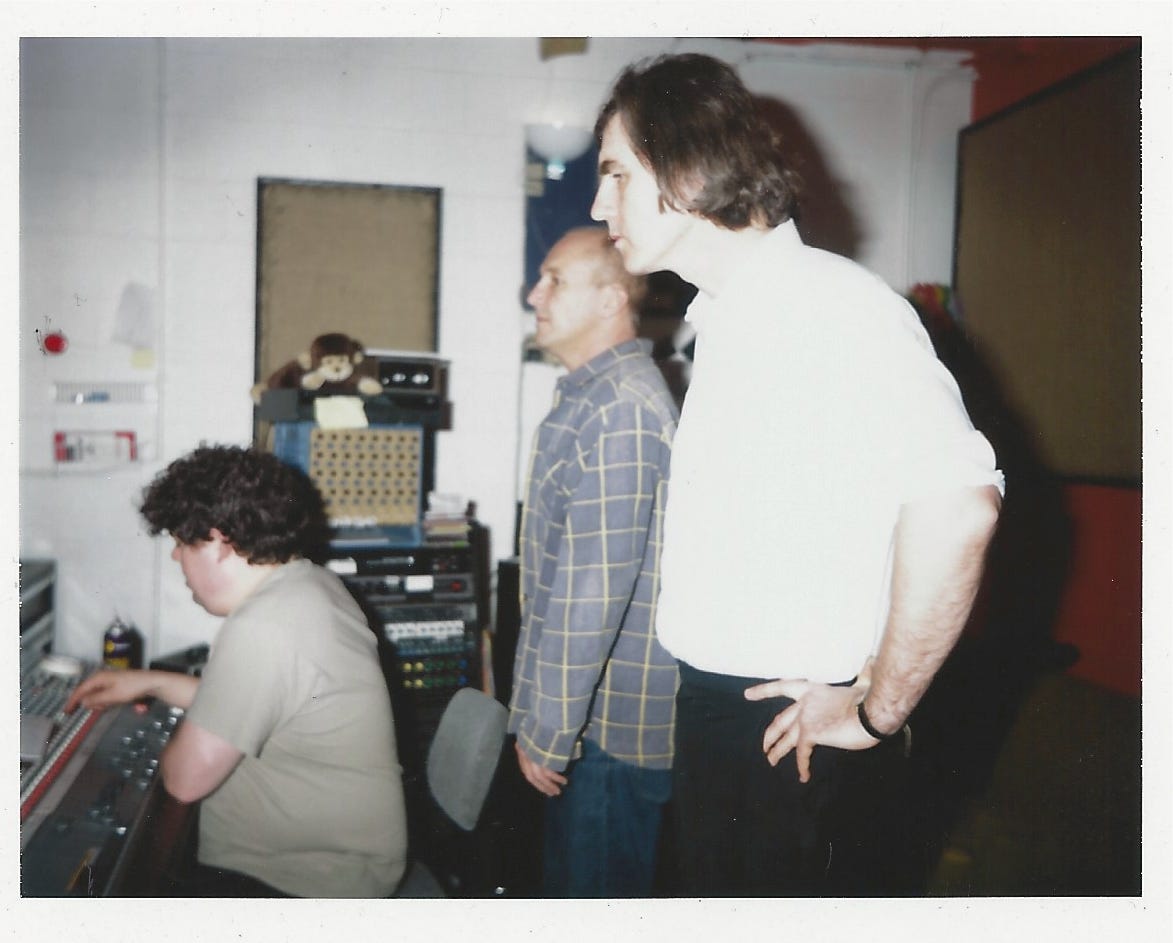
The band were obsessed with fresh sushi to-go from the Zupans Market up the street from the old Jackpot! space. It seemed there was a sushi run every day! At least two times some of us went out for evening karaoke at Chopsticks on Burnside. I recall Grant pulling up a stool, sitting down, looking at either the floor or out to the crowd, and singing a word perfect version of “Daydream Believer” by The Monkees (written by John Stewart). I’m not sure what buffoonery I was up to on the mic that night.
During tracking, we had a few days with a two-person news crew from Australia Broadcasting Corporation filming and interviewing us as we worked. It was incredibly invasive, so Robert came up with: “If any of us raise our right hand, you are to immediately cease filming and leave the room.” This was brilliant, and allowed us all that have those candid studio discussions that always look confrontational when shown out of context. This would be no Let It Be documentary.
I’m pretty sure we spent about two weeks tracking this album, and by the morning of the final day booked (February 23, 2000) we were actually done. Grant and Robert asked me to spend the day doing rough mixes, and to capture those to DAT tape. I spent about 1 hour per song getting simple balances. The only reverb used on these mixes was an Alesis MIDIverb II on setting 04. I had to work pretty fast, but keep in mind this was always 24 tracks or less, and everything had been tracked with complete intent – there was very little (if anything) to sort out when mixing. I made a duplicate of the DAT tape for myself, just in case the other got damaged or lost. The Go-Betweens left town the next day, and eventually Grant and Robert reconvened in Germany to mix the album. A bit later I got a message from the manager asking me if the DAT tape was the best copy of the rough mixes I had, I assume wondering if I’d also printed to analog tape. I confirmed it was, and asked why. It turned out four of my rough mixes would be the actual mixes for the album.
The Go-Betweens’ seventh album, The Friends of Rachel Worth, came out in September 2000. Jackpot! already had seen wonderful sessions with Quasi, Sleater-Kinney, Elliott Smith, Richmond Fontaine, Satan’s Pilgrims, No. 2, Pete Krebs, The Crabs, Chris Eckman (The Walkabouts), Miss Murgatroid, and Sarah Dougher that had received lots of attention, but for me, this one had been a dream come true. I really enjoyed working with Grant, Robert, and Adele (she is so awesome!!!!). Much of the time, I was certainly co-producing. I remember picking out guitar tones to use, comping vocals, and more, even though their manager would not allow me credit or payment for this work. I don’t regret it. What I do regret is the next story:
In 2002, The Go-Betweens were planning to record their follow up album in Australia, what became Bright Yellow Bright Orange. I was asked if I could come out and engineer. It would be two weeks of tracking, then a week off, and then a week mixing. I cannot state how much I wanted to do this project, but I was dead broke. I was completely living day-to-day financially, with no room on my credit cards. I asked for payment on the non-work week, and the manager would not grant this. I wasn’t so sure I could go a week in a foreign country with zero income while expenses at home also mounted. I eventually said I couldn’t do it, and it broke my heart. I still cannot enjoy the album they made, though I’m sure it is fine. It just hurts, and I wish I’d been there to help make it. But then…
In May 2006, I was in Arizona for a friend’s wedding. I checked my email only to find out Grant McLennan had just passed away. There would never be another chance for The Go-Betweens to make a new album. And certainly not one with me. And I’d never get to hang out with the charming Grant and hear his wonderful voice over the mic again. Fuck.
Post Script: In November 2019, I went to see Robert Forster play a show at Mississippi Studios in Portland. After his set, he invited me up the green room to chat. Here we were, just as we’d met, talking about The Go-Betweens but with such a different perspective. I’d lost Elliott Smith in 2003, and he’d lost Grant McLennan in 2006. It’d been 20 years since we’d first met, and so much had changed in our lives. But we did talk about those rough mixes I’d done so long ago. Robert wanted to make all my mixes the “bonus” alternate version of a The Friends of Rachel Worth reissue. He claimed there was some magic to those mixes. I think he’s right, and I hope this comes out. There was a lot of magic in any room with The Go-Betweens. -Larry Crane





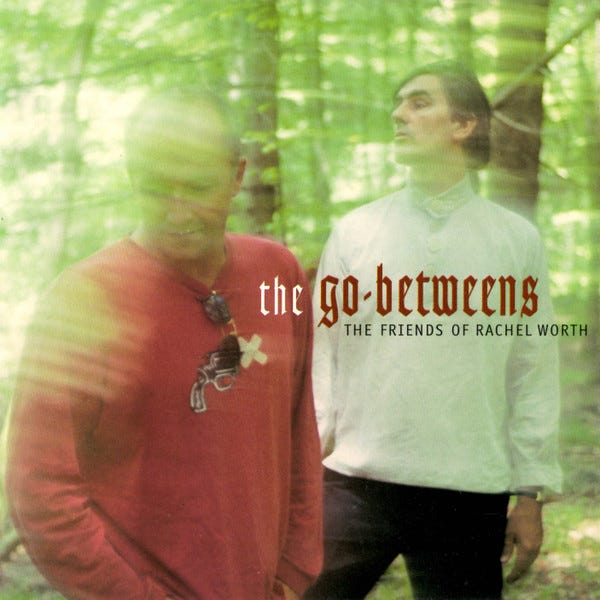
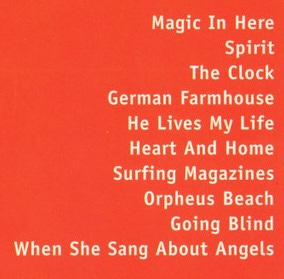
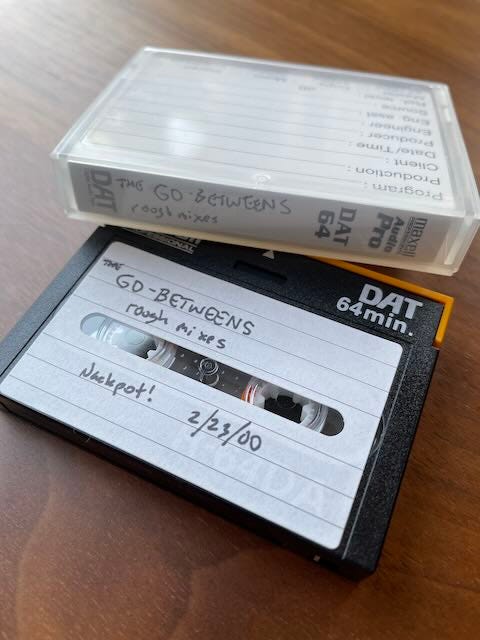

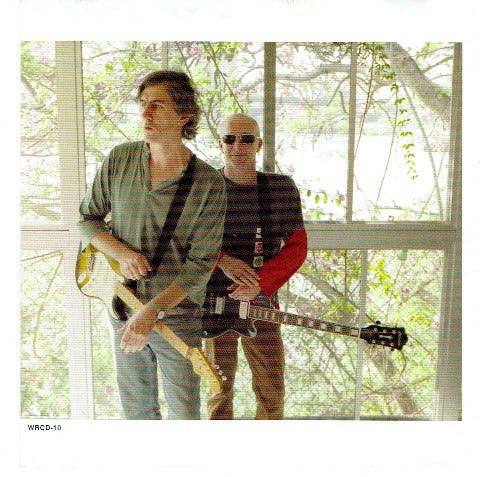
Love the stories! So glad you got the chance to work with them and the record you did sounds great. Looking forward to finding those rough mixes!
That's lovely, Larry. Thanks for letting me know about that. Now, onto your book about the sessions! ;-]